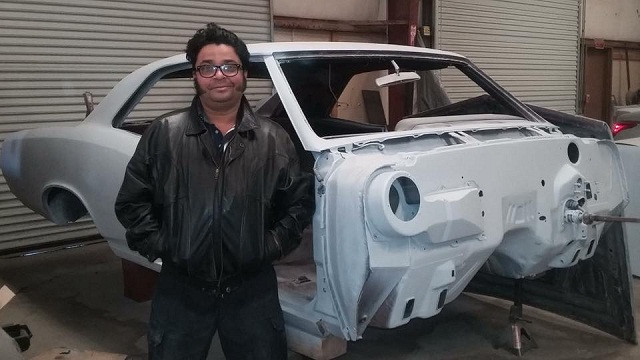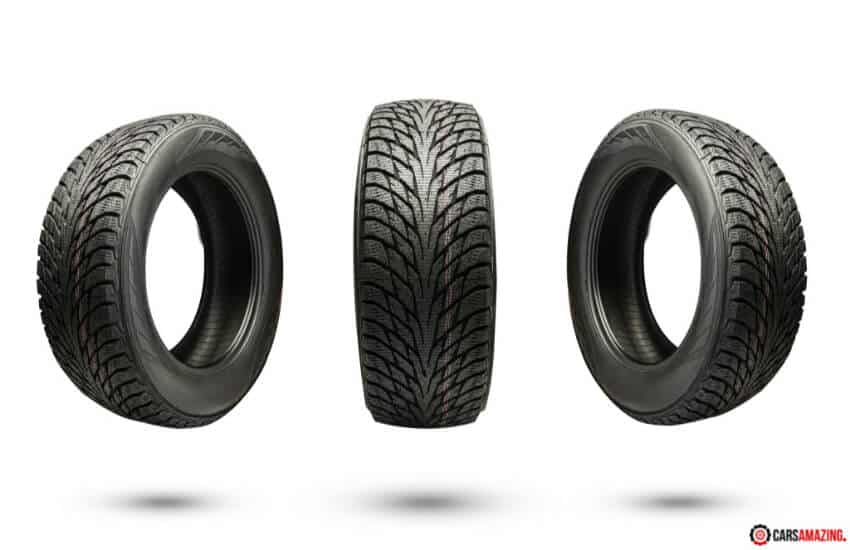Last Updated on February 3, 2023 by Leepu Da Maxim
Tire wear bars are the little marks you see embedded in your tire treads. To know your tire’s condition, run your eyes over those bars. If they are at the same level as the treads, your tires are wearing out. You’ll need to replace them as soon as you can.
Key Takeaways
- Tire manufacturers place wear bars all around tires to help the drivers identify the wearing-out of their tires
- Tire wear bars show when the tire is worn down and needs to be replaced
- If the tire tread is worn down to the wear bar’s level then you have to change the tire immediately to avoid any problems
- The tire treads are 2/32” deep and you should keep in mind that it is the hazard point for most tires
Why Good Tire Condition Is Important
Many drivers give little attention to their tires, which puts them in danger. Over the years, tire-related fatalities have carried headlines, and here are some figures:
| Tire-Related Deaths | |
| Year | Number of Fatalities |
| 2017 | 738 |
| 2019 | 612 |
| Since 1992 | 16,381 |
You may not consider those numbers alarming if you compare them to other causes of accidents. But the thing is, such deaths are preventable, and drivers can lower the numbers.
If you inspect your tires routinely, you will know if they’re worth riding on or not.
In this article, we’ll give particular focus to tire wear bars and tire treads. As you read, you’ll know:
1. What Wear Indicator Bars and What They Tell
2. How Deep are Tire Treads Are
3. Why Tire Treads Are Important
4. How to do
You Check the Condition of Your Tire (Penny, Probe, Ruler)
5. And the Signs of Bad Tires
Now, let’s roll (pun intended).
What Are Wear Bars And What Do They Tell?
Look between the tread markings of your tires. Do you see any small raised bars? If you do, you’ve found the tire wear bars. If not, check within the grooves of each tire. You won’t miss them.
And what do those wear bars show? They help you check tread depth. Once you notice that the bars are not too deep, you should start thinking about changing your tires.
What Depth Are Tire Treads?
Tire treads are 2/32” deep, which is the hazard point for most tires.
Why Are Tire Treads Important?
Your tire treads stabilize your vehicle in rainy or wet conditions. By doing that, they:
1. Improve cornering
2. And increase traction
If you drive worn-out tires, they’re likely to skid. When they do, you might lose control of the car and involve yourself in an accident. And no one wants that to happen.
How Do You Check Tire Conditions?
There are three tire features you should know if you want to check your tire’s condition. They are tread depth, tire pressure, and tire age.
But here, our focus is on tread depth. Keep going.
Tread Depth
We have found that the first way to measure tread depth is by looking at the wear bars. If they are even with the treads, the tire has little life left.
Now, other ways you can use to check tread depth include:
1. Using a penny
2. Using a gauge (probe)
3. Or a ruler
1. Using a penny or a quarter
As noted, the depth of a tire’s tread is 32nd of an inch. For new tires, the measurement is 10 – 11/32”. But some other tire types may be deeper than that. I’m talking about SUVs, trucks, and winter wheels.
As you drive your car, the tread depth decreases. And once it gets to the 2/32” threshold, you should change the tires.
To know if the tread is within that threshold:
1. Place your 1-cent coin into the tread (between any two ribs).
2. Then, turn it such that Lincoln’s head faces down.
3. If the top of Lincoln’s head disappears while the coin is in the tread, your tires are still okay. But, if you see his entire head, it’s time to change your tires.
On Bridgestone and Tires Plus, you’ll find this method explained well.
2. Using a probe/gauge
An inexpensive alternative to the penny test is using a suitable probe. A probe or a gauge is a tool you can use to measure inner diameters. And since you want to measure tread depth, it will serve you right.
If you have between $30 and $70 to spare, here are some gauges you can buy:
1. [amazon link=”B07GP7NVVL” title=”Professional Dial Test Indicator (by KHCraft)” /]
2. [amazon link=”B071YXKFTF” title=”Exclusive Dial Test Indicator (by Gold Plus)” /]
Once you buy the probe:
1. Stick it inside the tire’s grooves.
2. Press the shoulders (or clamps) against the tread block.
3. Then, read the result. If the tread depth is good, your measurements will be above 2/32”.
3. Using a ruler
If you can’t get a penny or buy a gauge, a ruler is another reliable option. Here’s how to do it:
a) Get a ruler with a millimeter or 1/16th-inch marking.
b) Then, dip it into the groove.
c) Now, measure from the base of the ruler to its level above the tread.
d) If you record anything around 1.6 millimeters, you should replace your tires.
What Are Signs Of Bad Tires?
These days, manufacturers use polyester, steel, and rubber layers when creating tires. Unfortunately, as the tires become older, the layers begin rotting and make your tires bad.
So, how will you know your tires are bad early?
Here’s how:
1. You Won’t Be Able To Balance Them
Sometimes, the treads of your tires will become too defective that you can’t balance them.
And what causes that imbalance? Well, as the tires wear out, the layers start separating. Since the process is irreversible, your tire won’t be the same again. They’ll refuse any balancing technique you use.
2. The Tires Will Make Noises
When your treads are chopped, you’ll hear a constant humming sound as you drive. The sound means that the tire is having difficulty rotating. Also, your suspension is failing.
And what about a thumping sound? Well, that is a sign of a flat spot, something that happens because of:
a) A defect in the tire
b) Or when you lock up the brakes
With both noises, the best solution is to replace the tire.
3. The Tires Will Wobble
When you drive a lousy tire at low speeds, you’ll feel the car bouncing. Together with the wobbling, you’ll also feel the steering wheel moving. Both motions tell you that it is time to change your tires.
And what causes the wobbling? Well, when the internal belts of the tire separate, the air presses on nothing but the tread. Then, a bubble forms in the tread, which wobbles the car.
4. The Tires Will Have Little To No Wet Traction
The best way to test tire traction is by driving through a wet surface. And if the tire is bad, its grooves won’t allow the water to leave the tread.
Instead, they’ll suck in water into the tread. Experts call this hydroplaning. When hydroplaning happens, a tire loses its traction and becomes irreparable.
Conclusion
Don’t wait until your tires are no longer viable. If their treads align with the wear indicator bars, you need to get a new set.
If you don’t, driving such a vehicle isn’t a good idea. This is because you may end up on the wrong side of the law. Also, you may lose control in slushy, rainy conditions, which could lead to an accident. I’m sure you don’t want to add to the tire-related accident stats, so replace bad tires.
If the tests and gauges are too much, consider talking to a licensed mechanic. First, the expert will check the tires. Then, they will recommend either replacement or repair. Whichever option you choose, the expert will be able to offer services on the spot.
References:
https://www.tiresplus.com/blog/tires/what-are-wear-bars/
https://worldtirereview.com/tire-wear-bars/

Hi, I’m Leepu Da Maxim , a dedicated car enthusiast with over 10 years of experience in this field, and I’m thrilled to share my passion and expertise with fellow car enthusiasts like you. My journey began in my hometown West Jordan, Utah, where my fascination with the mechanics and design of cars sparked at a young age. Over the years, this passion has evolved into a commitment to providing accurate, insightful, and engaging information about all things automotive through CarsAmazing .

